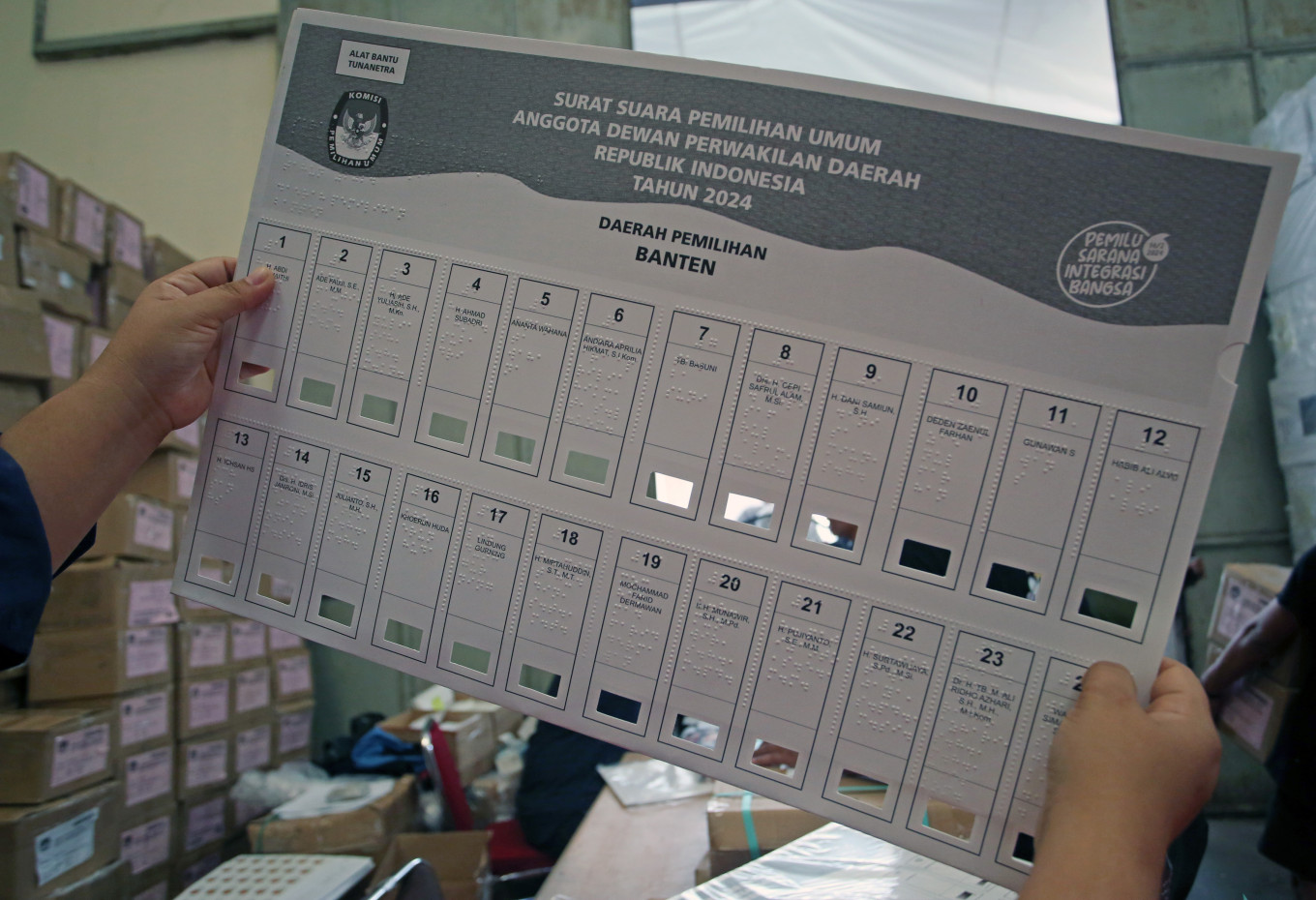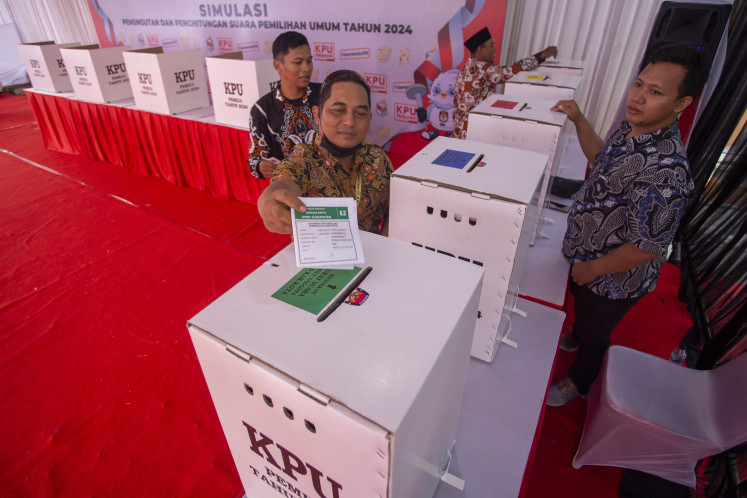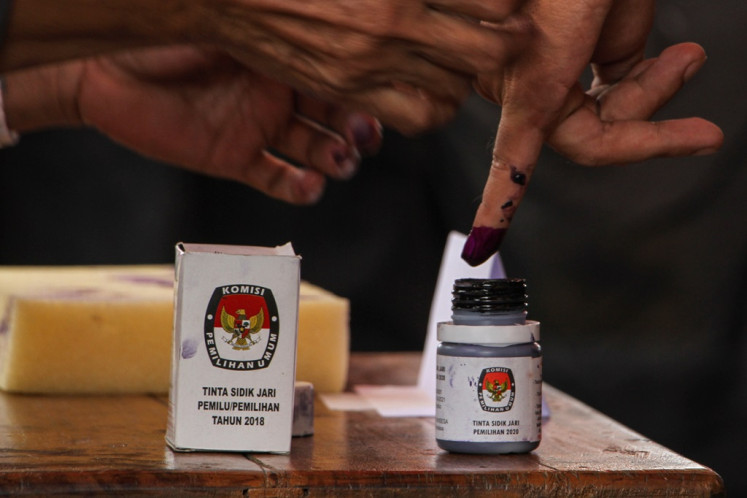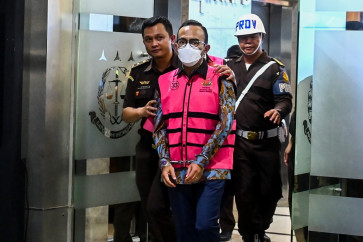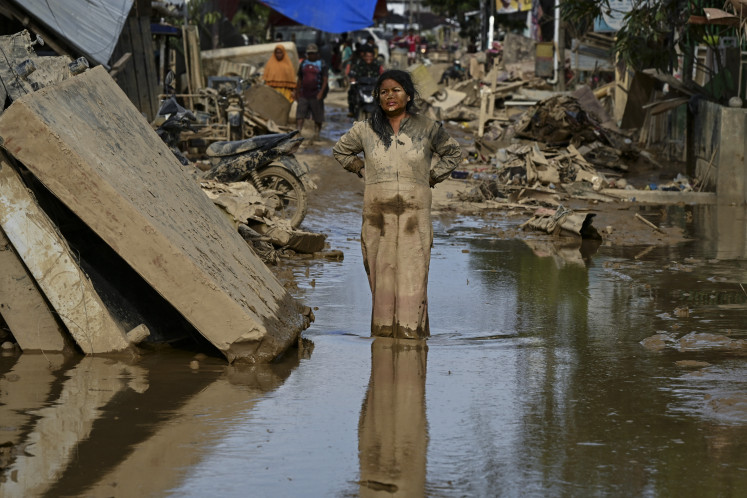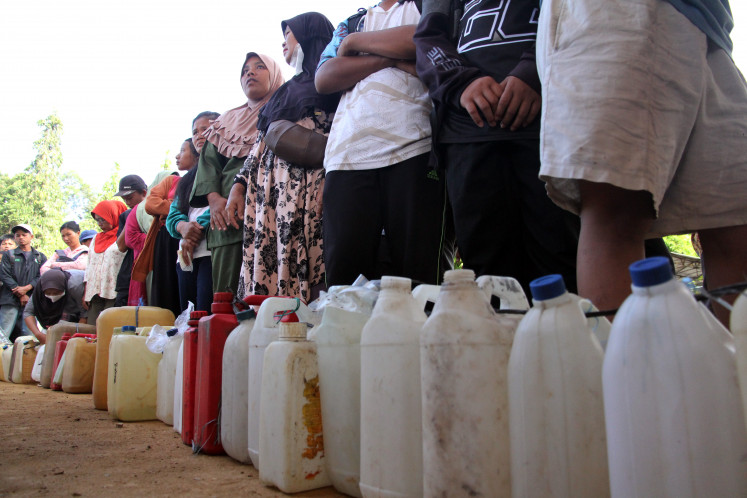Popular Reads
Top Results
Can't find what you're looking for?
View all search resultsPopular Reads
Top Results
Can't find what you're looking for?
View all search resultsHow to vote in the 2024 general election
In just a few weeks, the race to lead Indonesia for the next five years will culminate in a massive single-day vote. Here’s what you need to know to take part in balloting.
Change text size
Gift Premium Articles
to Anyone
In just a few weeks, the race to lead Indonesia for the next five years will culminate in a massive single-day vote.
The presidential election on Feb. 14 will be held at the same time as the legislative election, so voters will get to choose who to lead the government as well as legislatures at all administrative levels across the country.
Here is what you need to know to take part in balloting:
Why vote?
Everyone will have their own reasons for voting, but know that every vote counts and that the results will set the tone of the next five years of government.
On the other hand, there is little if any incentive to abstain; doing so might impact margins in the legislative elections, but it will not prevent a presidential candidate from securing a mandate from participating voters.
At worst, unused ballot papers can be misused for election fraud if they are not properly accounted for.
Prepping before the vote
To be able to vote, one must be eligible and registered with the General Elections Commission (KPU). Every Indonesian citizen over the age of 17 is eligible to vote as long as he or she is not a member of the military or police.
To check your status and your allocated polling station, head to cekdptonline.kpu.go.id and input your national ID or passport number. Visit the nearest KPU office if you are eligible but not yet registered.
Under certain circumstances, people may vote outside of their domicile, but they must get it sorted before Feb. 8 by getting in touch with local polling station officials (KPPS).
Local residents simulate casting the ballot at a polling station in Indramayu, West Java on Jan. 24, 2024 in preparation for the 2024 general election next month. (Antara/Dedhez Anggara)Once you know you can vote and where to do it, it is time to figure out who to vote for. In addition to the presidential election candidates, voters will be able to elect members of the legislature as well as regional and local councils.
You can find the campaign platforms and profiles of the candidates on the KPU’s database, as well as additional information from third parties like Bijak Memilih, Jaga Pemilu, Jari Ungu and even The Jakarta Post’s own election page.
What to expect from the balloting process
Prior to the day of the ballot, voters will be sent a Letter of Notification on the location of their polling station and a suggested time slot between 7 a.m. and 1 p.m. You will need to produce this letter and your ID card/passport at the polling station as proof of identity. Once verified, fill in the attendance form and wait your turn to vote in the booth.
With few exceptions, each voter will get five ballot papers: one for the presidential contenders, one for the House of Representatives (DPR) candidates, one for the Regional Representative Council (DPD), one for your provincial council (DPRD-I) and one for your local council (DPRD-II).
Once in the polling booth, ensure your ballot papers are not damaged or compromised and report any irregularities to the officials on duty. Cast your ballot by poking a hole in your choice using the nail provided in the booth. Refold all ballot papers and place them in the corresponding boxes, before getting your finger inked on your way out.
Accessibility options are available for the entirety of the balloting process. Please consult with your polling station officials prior to voting day.
Do’s and Don’ts on polling day
Do ensure you bring the notification letter given to you prior to voting day. If you have not received the letter yet or are still not registered in the database, consult your local polling administrators at the earliest opportunity. You can cast your vote after midday under certain circumstances.
Do come to the polling station informed about your preferences so the balloting process runs smoothly. Polling stations will often put up a mock ballot paper showing the candidates contesting for each position.
A voter dips their finger in ink after casting their vote during a voting simulation for 2024 general election in Makassar, South Sulawesi on Dec. 23, 2023. Makassar Elections Commission (KPU Makassar) holds the simulation as a technical tutorial for poll administrators ahead of the 2024 general election voting day, slated for Feb. 14, 2024. (Antara/Arnas Padda)Do ensure your ballot is cast properly. Poke just one hole for each ballot paper, and do it within the boxed margins. You may poke a candidate’s name, number, photo or the associated political party logo where available.
Do not try to vote more than once, impersonate other voters or let another person vote for you under false pretenses.
Do not harass other voters or compel anyone to support certain candidates. Campaigning is forbidden after the official window closes. Do your part to maintain order.
I’ve voted, now what?
The ink on your finger is a sign that you have voted. It is meant to be hard to wash out so you cannot cast your vote multiple times. Businesses will often give out special voting day discounts and other offers if you show them your inky finger, so make sure to take advantage of that. Once the day is done, use alcohol or acetone to remove the ink. You can also use vinegar and a little bit of dish soap to wash it off your finger.
You can observe the counting process at your local polling station after voting is over. If you suspect any fraudulent activities during the process, you can report it to an independent election watchdog website such as jagapemilu.com or file a written report to the Elections Supervisory Agency (Bawaslu).
Typically, after the balloting process is over, news stations will broadcast a quick-count of the election results or exit polls carried out by various research and poll agencies. The KPU usually announces the official results of the elections roughly a month after polling day. (tjs/nin)

